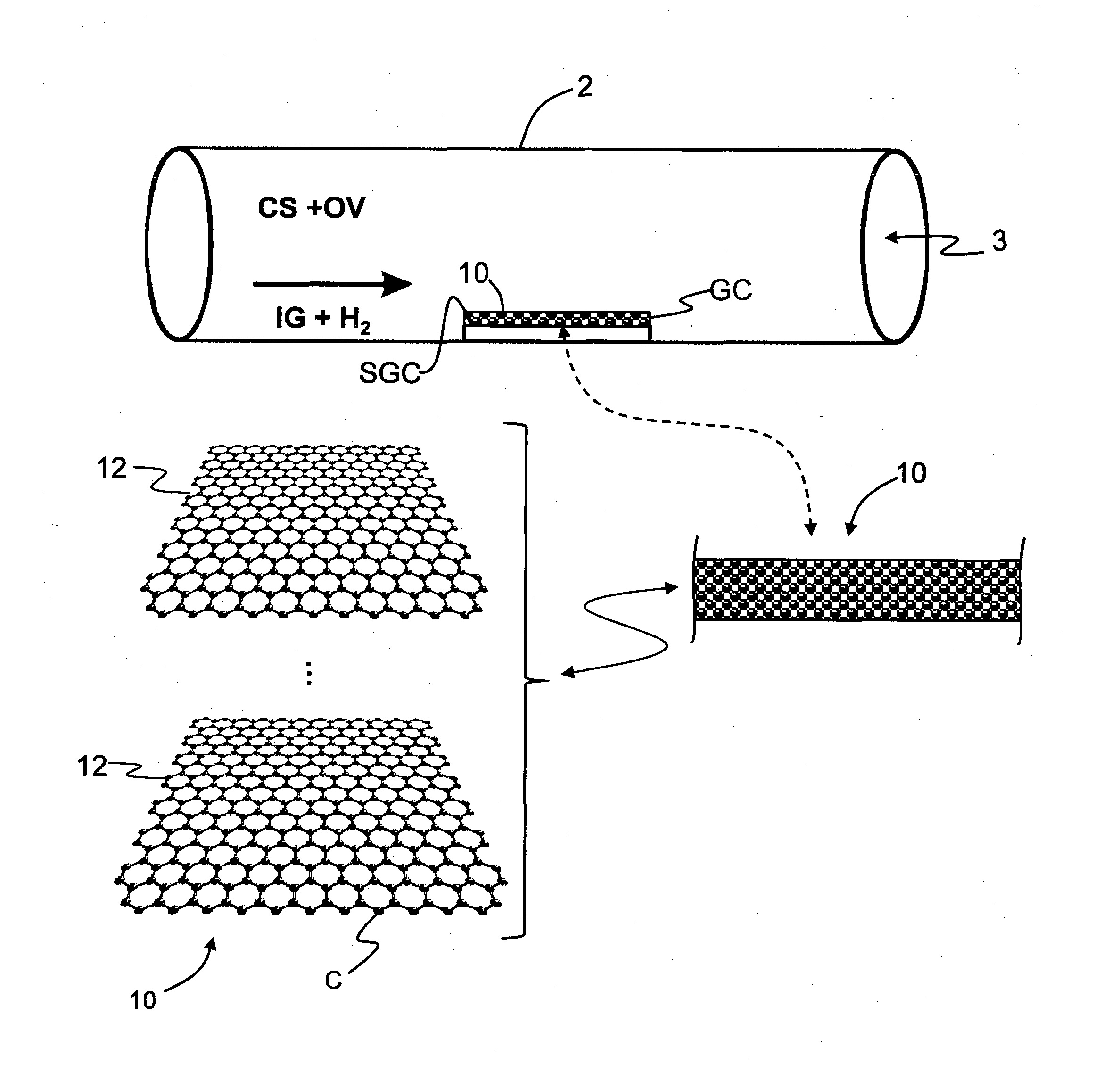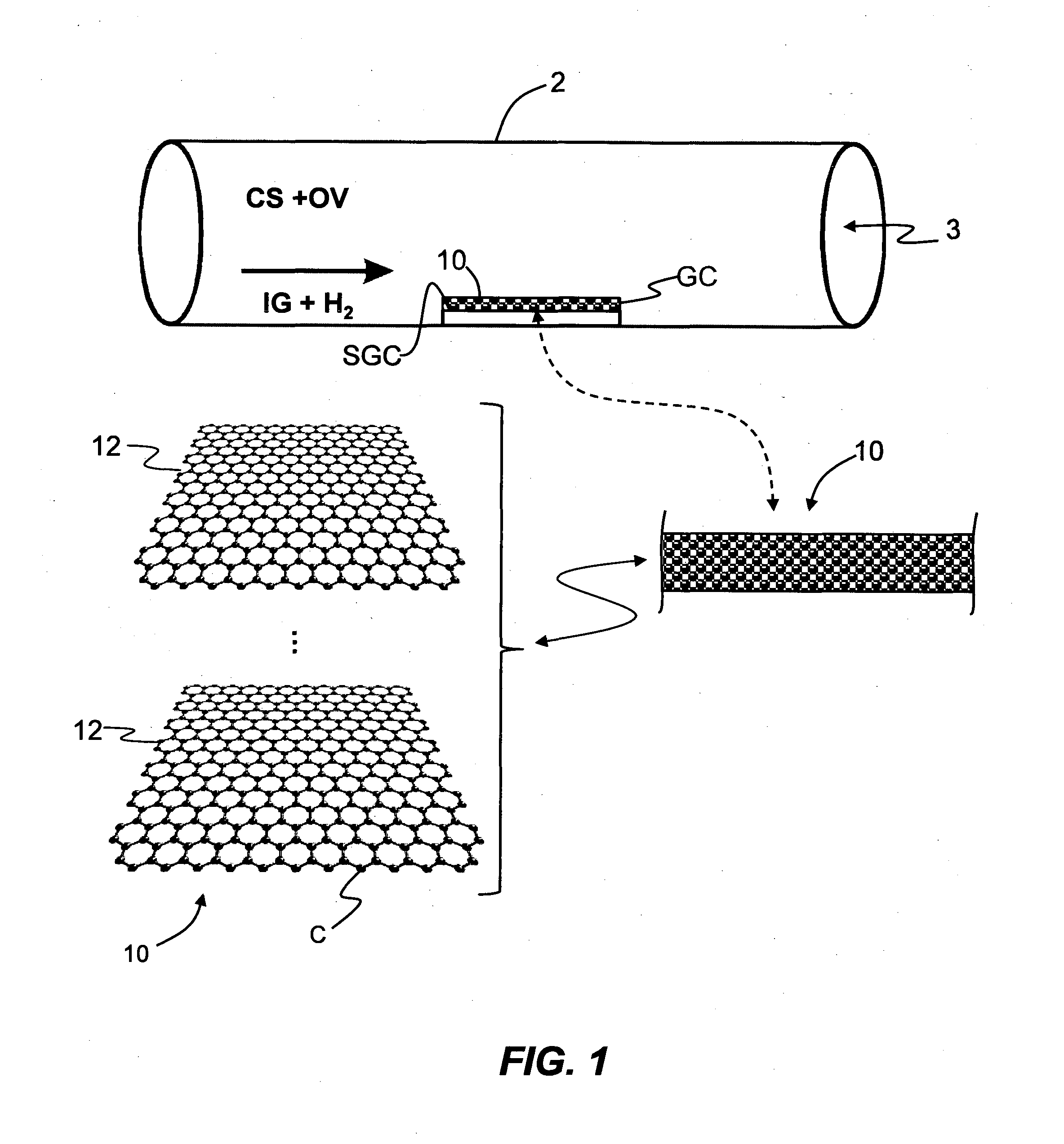Methods of growing uniform, large-scale, multilayer graphene film
- Summary
- Abstract
- Description
- Claims
- Application Information
AI Technical Summary
Benefits of technology
Problems solved by technology
Method used
Image
Examples
Embodiment Construction
[0035]The multilayer graphene film may be formed according to the method illustrated in the schematic diagram of FIG. 1. FIGS. 2A and 2B illustrate an example of a graphene film 10 being placed on a surface 22 of a substrate 20, as described in greater detail below.
[0036]FIG. 1 shows a chemical-vapor-deposition (CVD) reaction chamber 2 that has an interior 3 that can be brought to a select high temperature and a select pressure to carry out the methods disclosed herein. In the disclosed methods, graphene film 10 is made up of one or more layers (sheets) of graphene 12, as shown in the close-up views, which shows the carbon atoms C in the characteristic hexagonal arrangement for graphene. The graphene film 10 is grown by CVD in CVD reaction chamber 2 using a gaseous carbon source CS and a weak oxidizing vapor (oxidizer) OV. The graphene film 10 made from multiple stacked individual sheets of graphene 12 can be formed by heat-treating gaseous carbon source CS in the presence of a grap...
PUM
| Property | Measurement | Unit |
|---|---|---|
| Temperature | aaaaa | aaaaa |
| Temperature | aaaaa | aaaaa |
| Time | aaaaa | aaaaa |
Abstract
Description
Claims
Application Information
 Login to View More
Login to View More - R&D
- Intellectual Property
- Life Sciences
- Materials
- Tech Scout
- Unparalleled Data Quality
- Higher Quality Content
- 60% Fewer Hallucinations
Browse by: Latest US Patents, China's latest patents, Technical Efficacy Thesaurus, Application Domain, Technology Topic, Popular Technical Reports.
© 2025 PatSnap. All rights reserved.Legal|Privacy policy|Modern Slavery Act Transparency Statement|Sitemap|About US| Contact US: help@patsnap.com



